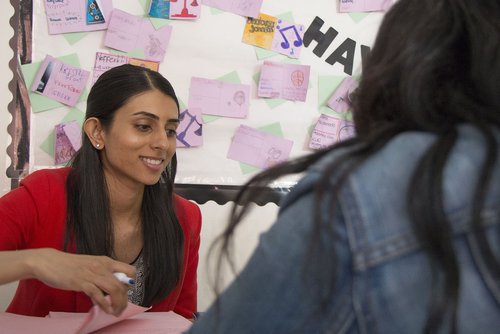Six Things to Consider When Starting a Tutoring Program
July 12, 2022Before you launch a tutoring program in your school, district or organization, make sure you ask the following six program design questions. The answers will help you design a more successful program that is right for your students.

1. What grades or subjects should be tutored?
Research suggests that early literacy and late math are the key places to leverage tutoring. Data shows that students who are proficient by Grade 3 have a four times greater likelihood of graduating than students who are not proficient in reading by grade 3.
When it comes to math, data also shows that students who pass ninth-grade Algebra 1 are four times more likely to graduate from high school than those who fail ninth-grade Algebra 1.
Additional research from a Harvard University meta-study of 196 randomized controlled trials showed clearly that early grade interventions in reading were more effective than late grade interventions in reading, and late grade interventions in math were more effective than early grade interventions in math.
2. Which students will receive tutoring? Many school districts choose to have all students in a specific grade level or core course receive tutoring. Schools can utilize the previous year’s standardized assessment scores, or diagnostic or entrance exam. Another thing to consider is targeting students who have had to repeat a given course.
3. Will tutoring happen during the school day or outside of regular school hours?
The top benefits of having tutoring as part of a student schedule during the school day are consistent, easy access to the students by the tutors, and alignment with their core class curriculum. This is known as high-impact tutoring.
For high school students, high-impact tutoring can be built in as an elective course, double blocked content-area course, intervention period, or additional core course for credit.
For middle school students, scheduling in cohorts that all travel together to each class throughout the day allows flexibility to build tutoring into the program.
For elementary students, splitting the core course period or using options like guided reading time into small group tutoring sessions allows the teacher to work with a smaller group while tutoring is happening in another room.
4. How frequently will students receive tutoring–what is the “dosage?
Saga recommends that students should receive high-impact (or high-dosage) tutoring every other day, for at least 60 hours of dosage. Ideally students should receive tutoring every day. This model can be built into the students’ schedule for the entire school year.
5. What will be the ratio of tutor-to-student?
While some people may believe that 1:1 tutoring is the best option for students, the truth is that 1:1 tutoring is not an optimal use of the tutor’s time. In fact, a tutor should do no more than 30% of the cognitive lift, and the student should do no less than 70%.
When asked about 1:1 tutoring, students said that they did not like it, because they felt pressured and uncomfortable that they were getting all the attention for the whole period. Instead, these students preferred working with one, two, or three other students. Peer-to-peer learning is an essential element of learning because students can collaborate, instruct each other, look at each other’s work to find errors or make recommendations, as well as read to each other. This dynamic is a very useful part of a well-structured tutorial.
6. How should you pair students with tutors?
Student-tutor pairings should stay consistent through the year, so the tutor can build ongoing, strong, personal relationships with the students tutored.
Kids don’t care how much you know until they know how much you care. That is a hallmark of tutoring. Relationship first, content second.
